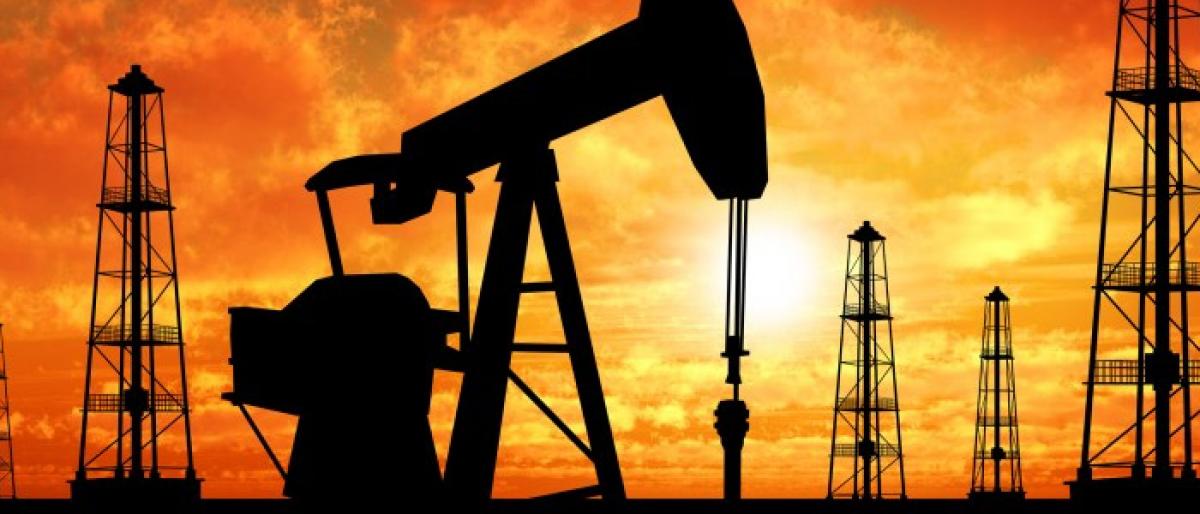Live
- Omar Abdullah Urges Congress To Earn INDIA Bloc Leadership Role
- Yogi Adityanath Contrasts Historical And Modern Treatment Of Workers In India
- Historic Temple In Sambhal Reopens After 46-Year Closure Following 1978 Riots
- Officials directed to work for deeper reach of guarantees
- Delay In 'One Nation, One Election' Bills Introduction Announced
- Exhilarating ‘Benchmark’ of Venkat Changavalli
- Development activities worth `30 cr launched in Puthalapattu constituency
- Allegations against KTR baseless: BRS leader
- Megastar Chiranjeevi to Visit Allu Arjun’s Residence at 12 PM Today
- Nilima Rane: Trailblazer in Nursing
Just In

India’s burgeoning middle class may be heaving a sigh of relief these days. For, oil marketing companies led by public sector giant Indian Oil have refrained from revising petrol and diesel prices on daily basis in a week or so. But this relief is short-lived. Though oil companies have not admitted publicly, the much-awaited break in the price revision is apparently due to the Assembly
India’s burgeoning middle class may be heaving a sigh of relief these days. For, oil marketing companies led by public sector giant Indian Oil have refrained from revising petrol and diesel prices on daily basis in a week or so. But this relief is short-lived. Though oil companies have not admitted publicly, the much-awaited break in the price revision is apparently due to the Assembly elections in Karnataka where Bharatiya Janata Party (BJP), the main constituent of NDA government at the Centre, is leaving no stone unturned to recapture power.
A victory in Karnataka is crucial for the saffron party as it looks to gain foothold in South of Vindyas. Therefore, it’s no surprise that the Narendra Modi-led NDA government has taken the extreme step to put brakes on revision of petrol and diesel prices.
But with global crude oil prices rising day after day, it is very unlikely that the Centre will remain benevolent post the elections in the Kannada State. But the one which deserves the appreciation of a highest order from the Modi government is ‘oil god’. Crude oil price was at $115 per barrel when Gujarat strongman Modi took reins as Prime Minister in 2014.
Thereafter, price cooled down gradually, hitting a historic low of $28 a barrel in early 2016. That was blessing in disguise for India which meets 70-75 per cent of its crude oil needs through imports. But known for his clever political tactics, Modi used lower oil prices for his advantage by not passing on the benefit to end users. Instead, his government raised indirect taxes on petrol and diesel to shore up its coffers.
As consequence, petrol prices continued to remain high in the country despite crude prices ruling at historic lows. However, the luxury of cheaper crude did not last long as prices started climbing up in 2017. From $43 a barrel in June last year, prices went up by a whopping 48 per cent to $64 in November. And the price rise continued. With the talk of Saudi Arabia, the world’s largest oil producer, making efforts to take price to $100 in a year or so, crude oil is on fire now. It reached $73.04 per barrel on Wednesday. A US hedge fund manager went a step further and said that crude oil will rise up to $300 in a not so distant future.
For a country like India, oil at $100 will put the economy in a tailspin. Therefore, the damage will unimaginable if price hits $300 mark. It goes without saying that higher oil prices will lead to increase in current account deficit (CAD). Estimates reveal that every one-dollar upswing in crude oil prices will leave a billion-dollar burden on CAD. We can imagine the adverse impact on Indian economy if the price crosses century mark. Interestingly, till now, the Modi government is passing the burden on to consumers.
As consequence, petrol and diesel prices have reached multi-year highs across the country. Going by what is happening now because of the Karnataka elections, the Centre may reduce taxes on petrol and diesel to ease burden on consumers before 2019 elections. But Indian economy will not escape from the shocks of crude oil.

© 2024 Hyderabad Media House Limited/The Hans India. All rights reserved. Powered by hocalwire.com







